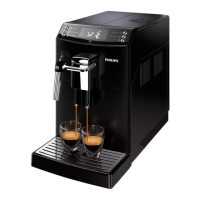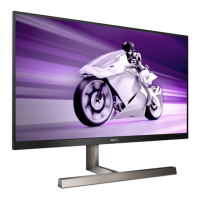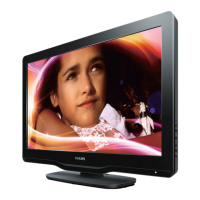
Do you have a question about the Philips EM5A P/M and is the answer not in the manual?
Details on reception, sound systems, AV connections, channel selections, and miscellaneous specifications.
Information on front controls and side connections, including S-Video, Audio/Video, and headphone.
Guidelines and regulations for safe repair procedures, including handling high voltage and component replacement.
Step-by-step instructions for disassembling the TV set, including cover and component removal.
Procedures for swapping complete assemblies or printed wiring boards (PWBs).
Instructions for reassembling the set in reverse order of disassembly.
Details on Service Default Mode (SDM), Service Alignment Mode (SAM), and Customer Service Mode (CSM).
Troubleshooting tips for common TV settings-related problems.
Introduction and specifications for ComPair, a service tool for Philips Consumer Electronics products.
Explanation of the error code buffer and how to read and clear it.
Procedure to make error buffer contents visible via the front LED, useful when there is no picture.
Description of the protection system, including I2C, OTC, and hardware related protections.
Miscellaneous tips for repairing the TV, including handling hot components and start-up sequences.
Schematic representation of the TV's wiring connections.
Block diagram illustrating the main supply and deflection circuitry.
Block diagram detailing the video processing stages and signal flow.
Block diagram illustrating the audio signal path and processing.
Layouts showing test points on the LSP, CRT panel, and Auto SCAVEM panel.
Layouts showing test points on the Small Signal Board (SSB) for diagnostics.
Circuit diagram for the main power supply unit.
Circuit diagram for the standby power supply unit.
Circuit diagram for the horizontal (line) deflection stage.
Circuit diagram for the vertical (frame) deflection and East/West drive stages.
Circuit diagram for the audio amplifier stages, including subwoofer and center speakers.
Circuit diagram for various AV inputs and outputs, including SCART, CVBS, SVHS, and HD interfaces.
Circuit diagram for the IF and I/O video processing section.
Circuit diagram for the PICNIC IC, responsible for 100Hz conversion and picture improvement.
Hardware-specific alignment procedures, including Vg2, Focus, and Geometry.
Software-based alignments for Geometry, White Tone, and Tuner IF settings.
Description of the power supply system, including main supply and standby supply circuits.
Description of the OTC (microprocessor) functions, data storage, and power supply.
Description of the tuner's capabilities and the IF and video processing.
Description of the HD Jack interface module's functions.
Description of the HIP's functions including IF demodulation and sync acquisition.
Description of the feature box (FBX7) for picture improvement on 50 Hz signals.
Description of the feature box (FBX7) for picture improvement on 60 Hz signals.
Description of PICNIC and FALCONIC ICs for 100Hz conversion and picture enhancement.
Description of Eagle IC functions for picture improvements like LTI, CTI, and peaking.
Description of the horizontal deflection stage operation and principles.
Description of the vertical deflection stage drive, flyback generation, and protections.
Details on protection circuits like Bridge Coil, Frame Output, and ARC.
Description of the audio system, including MSP IC, amplifier, and volume control.
Description of CRT panel RGB amplifiers and rotation control.
Description of the Auto Scavem circuit for sharpness improvement.
Description of the Double Window (DW) and Picture-in-Picture (PIP) functionalities.
Description of AutoTV features like Noise Reduction, Auto Sharpness, and Auto Ambient.












